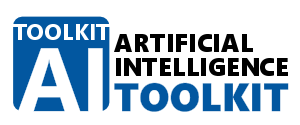In many industries the reliability of machines is very important. In aerospace, transportation, manufacturing, utilities, etc. complex machines containing many components undergo periodic inspection and repair (preventive maintenance). The main challenge is to schedule preventive maintenance and component replacement in an optimal way such that the machines can work reliably and the components are not replaced too early. Reliability, high asset utilization and operational cost reduction are, in short, the aims of each company in these industries.
By using machine learning and historical data we can train a model which can predict when the next failure will occur and thus when preventive maintenance should be scheduled. We call these kinds of machine learning models predictive maintenance machine learning (PMML) models. There are two main types of PMML models:
- Regression models predict the remaining useful lifetime (RUL) of the machine or components.
- Classification models predict the failure within a pre-defined time period (time window).
In order to build a useful PMML model we need to go through some important steps which are summarized hereunder:
- Data collection
- Feature Engineering
- Data labeling
- Defining the training and test datasets
- Handling imbalance in the data
The input data may come from different sources and usually contains failure history, maintenance history, machine operating conditions and usage, machine properties and operator properties.
After we have collected all necessary data we must combine them into one synchronized dataset which can be fed into the machine learning model. We call this step feature engineering because we are building a dataset from features fabricated from the collected data. This is often a complex process in the case of a predictive maintenance model and the performance of the model will entirely depend on it.
The method for combining the collected data into the final dataset is usually very similar but of course business case and data dependent. Remember that the aim is to predict when the next failure of the machine will occur by using historical data.
There are two types of data, time series and static data. Static data can usually be simply combined with the other data by grouping them per machine ID. For example, if the maintenance history is defined with “time | machine ID | component”, and the machine properties are defined with “machine ID | property 1 | property 2…”, then we can simply add the static machine properties per machine ID as follows: “time | machine ID | component | property 1 | property 2…”
In the case of times series data we need to aggregate the data according to some pre-defined rules based on the business case.
We usually want to predict machine failures in a future time period (time window) based on a historical time period. The data may be collected with a frequency of seconds, minutes, hours, etc. and we need to aggregate it into a pre-defined time period based on the business case. The evolution of the features in the time window is captured by the aggregated values. The machine learning model will learn which aggregated values result in a failure in the next time window. For example, if we want to predict whether a machine will fail in the next 24 hour period, then we can use a time window of 24 hours and label the aggregated records which fall into a 24 hour window just before a failure occurs as FAILURE and all other records as NORMAL. It is of course business case dependent as to how long the time window should be. Sometimes 24 hours is appropriate but sometimes we need to use a longer period, for example, to allow for a longer period of supply of repair parts. If it takes one week to get repair parts then we need to predict a failure much earlier in time.
This article is a slightly modified excerpt from the book “The Application of Artificial Intelligence”. If you are interested in the subject then it is strongly recommended to read the book which contains many more details and real world case studies for several sectors and disciplines! The book explains several examples step-by-step by using the AI-TOOLKIT. The book is going through the publishing process at the time of writing this article. You may use the contact form for info about pre-ordering the book.
| Learn about the application of Artificial Intelligence and Machine Learning from the book "The Application of Artificial Intelligence | Step-by-Step Guide from Beginner to Expert", Springer 2020 (~400 pages) (ISBN 978-3-030-60031-0). Unique, understandable view of machine learning using many practical examples. Introduces AI-TOOLKIT, freely available software that allows the reader to test and study the examples in the book. No programming or scripting skills needed! Suitable for self-study by professionals, also useful as a supplementary resource for advanced undergraduate and graduate courses on AI. More information can be found at the Springer website: Springer book: The Application of Artificial Intelligence. |
 |











